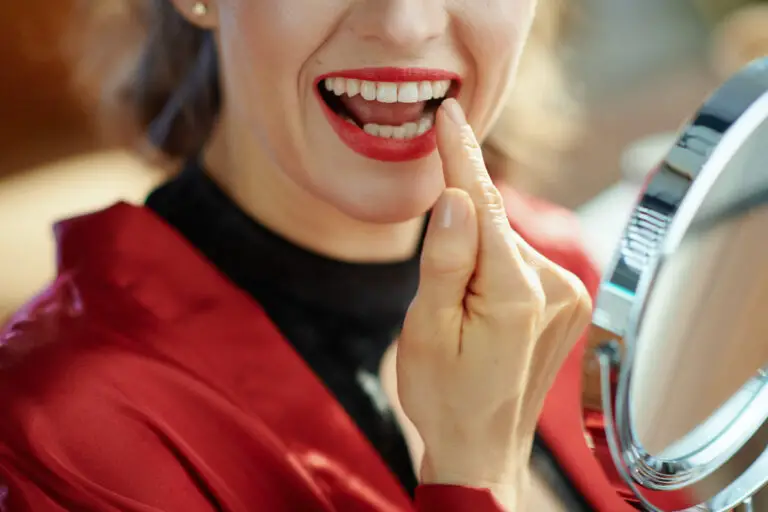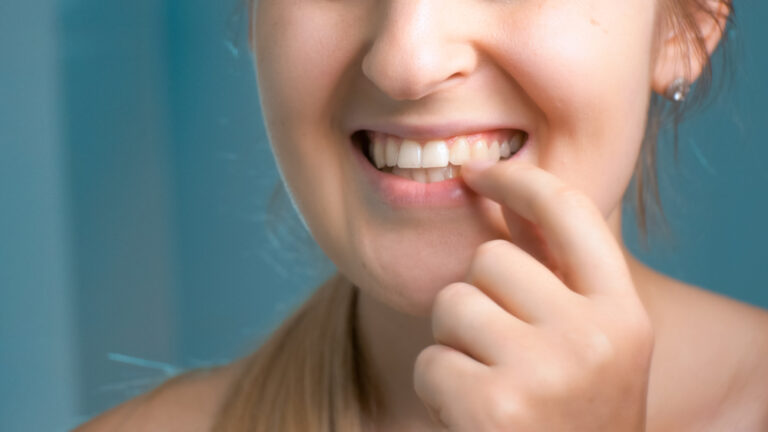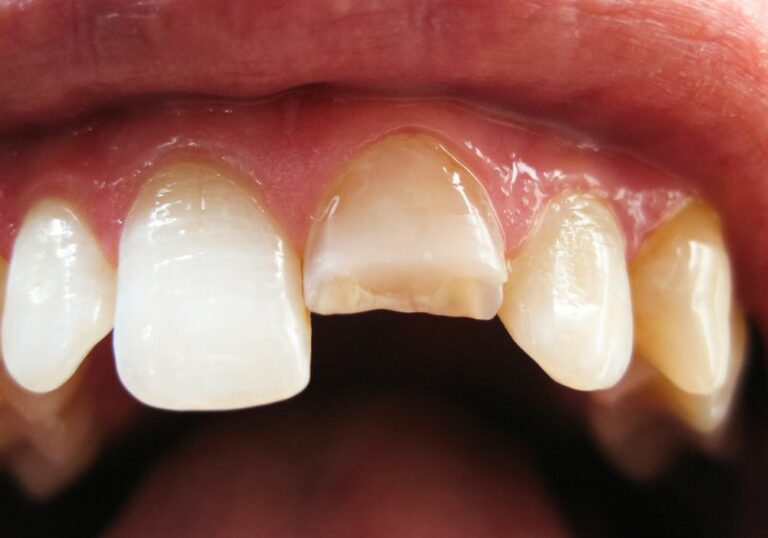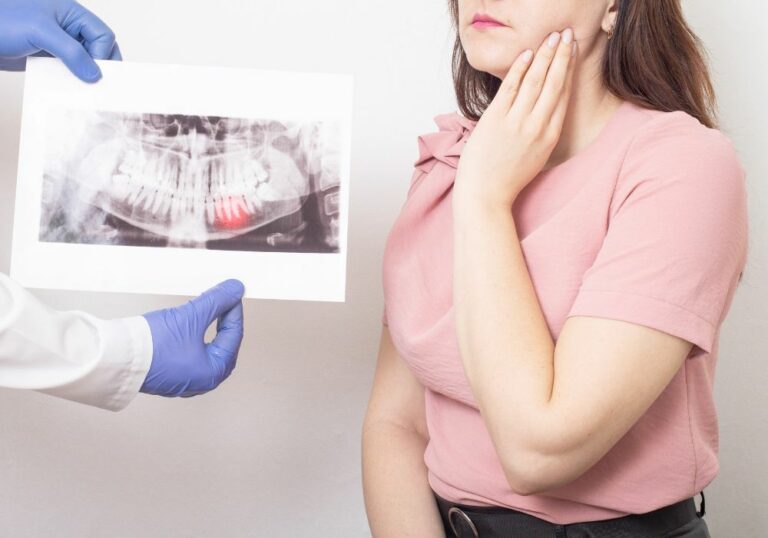Are you self-conscious about the stains on your teeth? Do you wish you could have a brighter, whiter smile without spending a fortune on professional teeth whitening treatments? Luckily, there are several effective methods to remove stains from your teeth at home. In this article, we will explore some of the most popular and proven methods for removing stains from your teeth using natural ingredients and common household items.
One of the most popular and effective methods for removing stains from your teeth is using baking soda. Baking soda is a mild abrasive that can gently scrub away surface stains on your teeth. You can mix a small amount of baking soda with water to form a paste, then brush your teeth with the mixture for two minutes. Be sure to rinse your mouth thoroughly with water after brushing to remove any remaining baking soda.
Another natural ingredient that can help remove stains from your teeth is apple cider vinegar. Apple cider vinegar contains acetic acid, which can help dissolve and remove stains on your teeth. You can mix apple cider vinegar with water and use it as a mouthwash, swishing it around in your mouth for a few minutes before spitting it out. However, be careful not to use too much apple cider vinegar, as it can erode your tooth enamel if used excessively.
Understanding Tooth Stains
If you’re looking to remove stains from your teeth at home, it’s important to first understand what causes these stains. There are different types of tooth stains, and each type has a different cause. In this section, we’ll go over the different types of tooth stains and what causes them.
Types of Tooth Stains
There are two main types of tooth stains: extrinsic and intrinsic.
Extrinsic stains are surface-level stains that occur on the outer layer of your teeth (the enamel). These stains are usually caused by external factors like food, drinks, and smoking. Some common examples of extrinsic stains include coffee stains, wine stains, and tobacco stains.
Intrinsic stains, on the other hand, are stains that occur within the tooth itself. These stains are usually caused by internal factors like aging, trauma, or certain medications. Intrinsic stains can be more difficult to remove than extrinsic stains, and may require professional treatment.
Causes of Tooth Stains
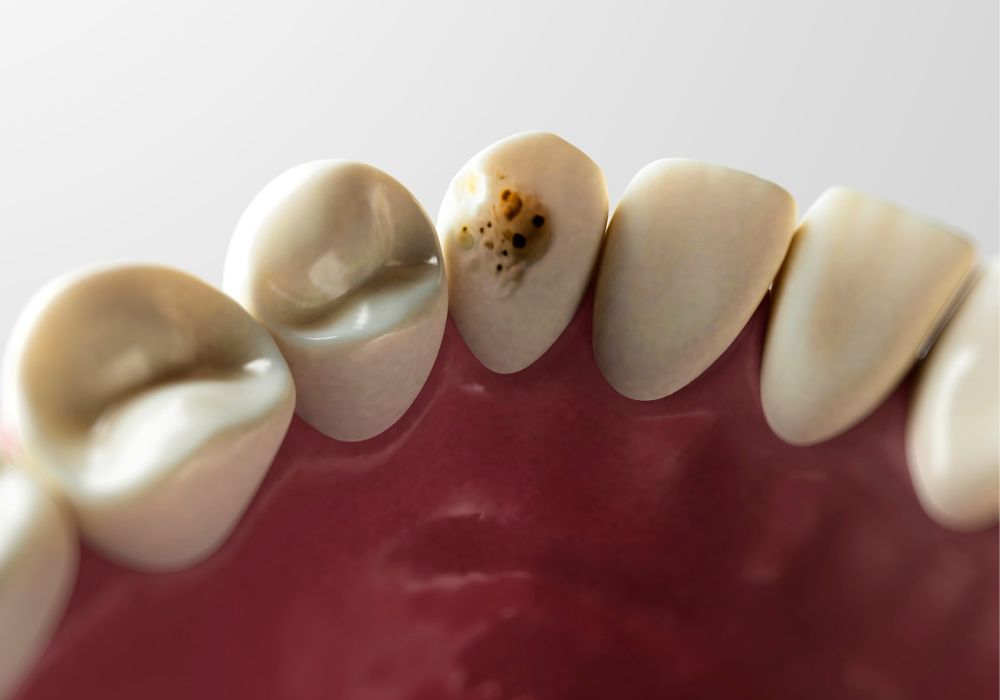
Now that we’ve gone over the different types of tooth stains, let’s take a look at some of the common causes of these stains.
Extrinsic Stains
Extrinsic stains are usually caused by external factors like:
- Foods and drinks: Certain foods and drinks, like coffee, tea, red wine, and berries, can stain your teeth over time.
- Tobacco: Smoking or using other tobacco products can cause yellow or brown stains on your teeth.
- Poor oral hygiene: Not brushing and flossing regularly can allow plaque and tartar to build up on your teeth, which can lead to staining.
Intrinsic Stains
Intrinsic stains are usually caused by internal factors like:
- Aging: As you age, your teeth naturally become more yellow or gray.
- Trauma: If you experience trauma to your teeth (like a fall or injury), it can cause your teeth to become discolored.
- Medications: Certain medications (like tetracycline) can cause intrinsic stains on your teeth.
Understanding the type and cause of your tooth stains can help you choose the best method for removing them. In the next section, we’ll go over some effective ways to remove tooth stains at home.
Preventing Tooth Stains
If you want to keep your teeth looking bright and healthy, it’s important to take steps to prevent stains from developing in the first place. Here are some tips to help you keep your teeth looking their best:
Dietary Changes
The foods and drinks you consume can have a big impact on the color of your teeth. If you want to prevent stains from developing, consider making some changes to your diet. Here are some foods and drinks to avoid or consume in moderation:
- Coffee and tea: These beverages can cause yellowing of the teeth over time. Consider drinking them through a straw to minimize contact with your teeth.
- Red wine: This drink is notorious for staining teeth. If you do indulge, rinse your mouth with water afterward.
- Soda: The high sugar content in soda can cause tooth decay and discoloration. Opt for water or unsweetened tea instead.
- Berries: While berries are healthy, they can also stain your teeth. Rinse your mouth with water after eating them.
On the other hand, there are also foods that can help keep your teeth looking bright. Here are some options to consider:
- Cheese: This dairy product contains calcium and phosphorus, which can help strengthen tooth enamel and prevent staining.
- Crunchy fruits and vegetables: Apples, carrots, and celery can help scrub away surface stains on your teeth.
- Water: Drinking plenty of water can help rinse away food particles and prevent staining.
Oral Hygiene Practices
Good oral hygiene is crucial for preventing tooth stains. Here are some tips to help you maintain a healthy smile:
- Brush your teeth twice a day: Brushing your teeth regularly can help remove surface stains and prevent plaque buildup.
- Floss daily: Flossing can help remove food particles and plaque from between your teeth, which can prevent staining.
- Use mouthwash: Mouthwash can help kill bacteria and prevent plaque buildup, which can lead to staining.
- Visit your dentist regularly: Regular dental checkups and cleanings can help keep your teeth healthy and prevent staining.
By making some simple changes to your diet and oral hygiene routine, you can help prevent tooth stains and keep your smile looking bright and healthy.
Home Remedies for Stain Removal
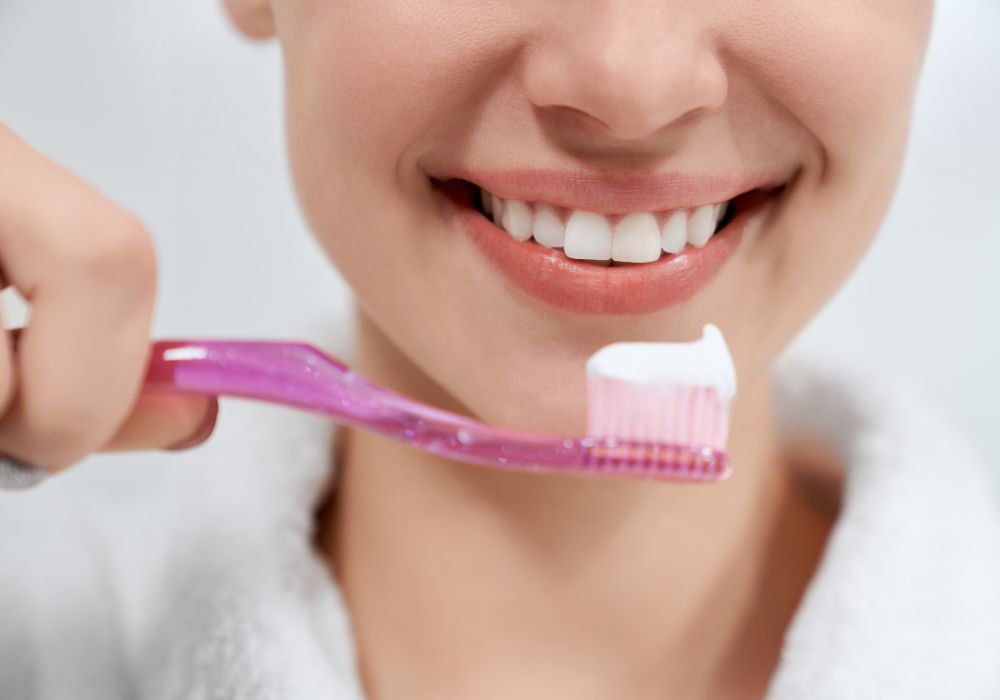
If you’re looking for ways to remove stains from your teeth at home, there are several natural remedies you can try. Here are some of the most effective home remedies for stain removal:
Baking Soda and Hydrogen Peroxide
Baking soda and hydrogen peroxide are two common household items that can be used to remove stains from teeth. Baking soda is a mild abrasive that can help scrub away surface stains, while hydrogen peroxide is a natural bleaching agent that can whiten teeth.
To use this method, mix one tablespoon of baking soda with two tablespoons of hydrogen peroxide to form a paste. Use a toothbrush to apply the paste to your teeth, and then rinse your mouth thoroughly with water.
Apple Cider Vinegar
Apple cider vinegar is another natural remedy that can help remove stains from teeth. It contains acetic acid, which has natural bleaching properties.
To use this method, mix two teaspoons of apple cider vinegar with one teaspoon of baking soda to form a paste. Use a toothbrush to apply the paste to your teeth, and then rinse your mouth thoroughly with water.
Oil Pulling
Oil pulling is an ancient Ayurvedic practice that involves swishing oil around in your mouth to remove toxins and bacteria. It can also help remove stains from teeth.
To use this method, swish one tablespoon of coconut oil around in your mouth for 15-20 minutes, and then spit it out. Rinse your mouth thoroughly with water, and then brush your teeth as usual.
Activated Charcoal
Activated charcoal is a highly absorbent substance that can help remove stains from teeth. It works by binding to toxins and bacteria in the mouth, which can help whiten teeth.
To use this method, wet your toothbrush and dip it into activated charcoal powder. Brush your teeth for two minutes, and then rinse your mouth thoroughly with water.
Remember that these home remedies may not work for everyone, and they may take some time to show results. If you have stubborn stains or discoloration, it’s best to consult with a dentist to determine the best course of treatment.
Over-The-Counter Products
If you’re looking to remove stains from your teeth at home, there are many over-the-counter products available that can help. Here are two popular options:
Whitening Toothpastes
Whitening toothpastes are a common and affordable option for removing surface stains from your teeth. These toothpastes contain mild abrasives and chemicals that help to polish and whiten teeth. Some popular ingredients in whitening toothpastes include baking soda, hydrogen peroxide, and silica.
It’s important to note that while whitening toothpastes can help to remove surface stains, they won’t change the natural color of your teeth. Additionally, some people may experience tooth sensitivity or gum irritation when using whitening toothpastes. If you experience any discomfort, it’s best to discontinue use and speak with your dentist.
Whitening Strips
Whitening strips are another popular option for at-home teeth whitening. These thin, flexible strips are coated with a peroxide-based gel and are placed directly onto the teeth. The strips are worn for a specified amount of time, usually around 30 minutes, and then removed.
Whitening strips are generally safe and effective for removing surface stains from teeth. However, they may not be suitable for everyone. If you have sensitive teeth or gum disease, you should speak with your dentist before using whitening strips. Additionally, it’s important to follow the instructions carefully and not overuse the strips, as this can cause tooth sensitivity and gum irritation.
Overall, both whitening toothpastes and whitening strips can be effective options for removing stains from your teeth at home. However, it’s important to remember that these products are not a substitute for regular dental cleanings and checkups. If you have stubborn stains or discoloration, it’s best to speak with your dentist about other treatment options.
When to Consult a Dentist

While there are many home remedies and over-the-counter products available to remove teeth stains, sometimes it’s best to consult a dentist. Here are some situations where you may want to consider seeing a dental professional:
Severe Staining
If your teeth are severely stained, it may be difficult to remove the discoloration with at-home treatments. A dentist can provide professional teeth whitening services that can effectively remove stubborn stains.
Tooth Sensitivity
Some teeth whitening products can cause tooth sensitivity, especially if they are used incorrectly or excessively. If you experience tooth sensitivity or pain while using a whitening product, it’s important to stop using it and consult a dentist.
Gum Irritation
Whitening products can also irritate the gums, causing redness and discomfort. If you experience gum irritation while using a whitening product, it’s important to stop using it and consult a dentist.
Dental Issues
If you have dental issues such as cavities, gum disease, or enamel erosion, it’s important to address these issues before attempting to whiten your teeth. A dentist can evaluate your dental health and provide recommendations for treatment.
Custom Whitening Trays
If you’re considering using custom whitening trays, it’s important to consult a dentist to ensure that the trays fit properly and that the whitening gel is applied correctly. Improperly fitting trays or incorrect application of the gel can cause uneven whitening or damage to the teeth.
Remember, while home remedies and over-the-counter products can be effective for mild teeth staining, it’s important to consult a dentist if you have severe staining, tooth sensitivity, gum irritation, dental issues, or if you’re considering using custom whitening trays. A dental professional can provide safe and effective teeth whitening services and ensure that your dental health is not compromised.
Frequently Asked Questions
What are some effective ways to remove teeth stains at home?
There are several effective ways to remove teeth stains at home, including brushing with baking soda, using hydrogen peroxide, and oil pulling. You can also try using whitening toothpaste or over-the-counter whitening strips.
How can I safely remove stains from my teeth without damaging the enamel?
To safely remove stains from your teeth without damaging the enamel, it’s important to use gentle products and techniques. Avoid using abrasive toothpaste or brushing too hard, as this can wear down your enamel and make your teeth more susceptible to staining. Stick to gentle brushing and use products that are specifically designed for whitening teeth.
Are there any natural remedies for removing teeth stains?
Yes, there are several natural remedies for removing teeth stains, including brushing with baking soda, oil pulling, and using hydrogen peroxide. You can also try rubbing the inside of a banana peel on your teeth, as the minerals in the peel can help remove stains.
Can I remove deep stains from my teeth at home?
While some deep stains may be difficult to remove at home, there are several options you can try. You can use over-the-counter whitening strips or gels, or you can visit your dentist for a professional whitening treatment. In some cases, deep stains may require more advanced treatments, such as veneers or crowns.
What are some common types of teeth stains and how can I remove them?
There are several types of teeth stains, including extrinsic stains caused by external factors like food and drink, and intrinsic stains caused by internal factors like genetics or medication. To remove extrinsic stains, you can try brushing with baking soda or using whitening strips. Intrinsic stains may require more advanced treatments, such as professional whitening or veneers.
Is it possible to remove brown stains from teeth at home?
Yes, it is possible to remove brown stains from teeth at home using natural remedies like brushing with baking soda or oil pulling. However, if the stains are severe or caused by internal factors, you may need to visit your dentist for a professional whitening treatment or other advanced procedures.

